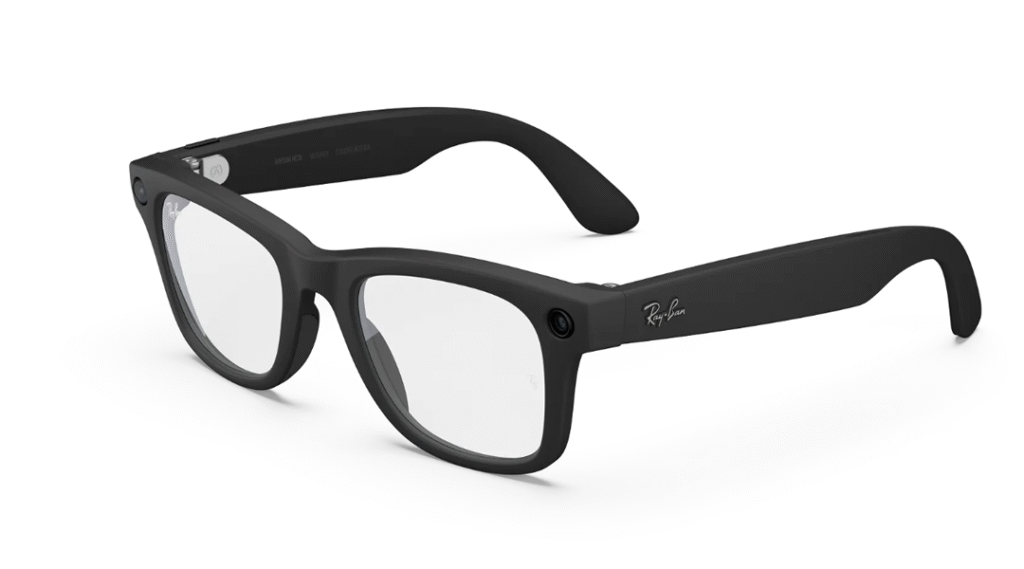Meta’s collaboration with Ray-Ban continues to normalize smart glasses, and the Ray-Ban Meta Wayfarer Gen 2 is their newest, more refined entry. Short version: it’s one of the most practical and approachable choices for someone buying AI-enabled glasses today — but it isn’t automatically the perfect pick for every buyer.
Strong practical upgrades
Gen 2 addresses two of the biggest consumer gripes with early smart-glass models: power longevity and imaging. The second generation steps up video capture to 3K Ultra-HD and improves stabilization, producing much cleaner point-of-view footage for casual creators and people who want to shoot clips without using a phone. That improvement matters if you plan to record on the go.
Battery has been improved too — Meta claims the glasses last significantly longer during normal use and that the charging case adds many extra hours. For users who dislike running out of battery mid-day, this is a meaningful enhancement compared with the first generation.
Design-wise, Meta keeps the classic Wayfarer silhouette so the glasses look like ordinary sunglasses rather than a conspicuous gadget. Under the hood you still get a 12-megapixel ultra-wide camera, a multi-microphone array for better voice capture, open-ear speakers for ambient-aware audio, and built-in storage (32 GB) so photos and videos can be saved on the device without being constantly tethered to a phone. Those features make Gen 2 a useful hybrid — part sunglasses, part wearable camera, part audio device.
The AI experience — helpful but not sci-fi
Integration with Meta AI is a headline feature: hands-free voice interaction, context-aware replies, real-time translations, and on-device assistance tied to what you see. For commuters, travelers, or anyone who prefers quick, phone-free interactions, these capabilities are genuinely handy. However, the AI features are practical rather than fantastical — think voice helpers and contextual prompts, not immersive augmented reality overlays. If your main interest is seeing AR graphics projected into the lenses, Gen 2 won’t deliver that experience.
Trade-offs and limitations
While the audio and camera performance are solid for an always-worn accessory, they don’t replace high-end headphones or a dedicated camera. Reviewers and users generally praise the convenience but note compromises when compared with specialized gear: the sound won’t satisfy audiophiles and image quality still trails professional cameras. There’s also the social and privacy factor — wearing a camera on your face remains a sensitive issue in public, and reactions vary from indifferent acceptance to discomfort. How comfortable you are wearing a camera will affect how practical the glasses are for you.
Where it sits on price and in the market
Gen 2 is priced in the mid-tier smart-glass range: pricier than basic options but much less than experimental display-focused headsets. Lower-cost models exist, but they typically sacrifice style, software polish, or battery life. If you want the Ray-Ban aesthetic paired with a mature software ecosystem, Gen 2 hits a desirable middle ground. If you require in-lens AR or top-tier audio, there are alternatives worth considering.

Who should consider buying it?
Choose the Ray-Ban Meta Wayfarer Gen 2 if:
- You want a discreet, fashionable pair of glasses that doubles as a hands-free camera, speaker, and AI assistant.
- Long battery life and better onboard video capture are important to you.
- You prefer a polished app and ecosystem rather than bleeding-edge AR tech.
Look elsewhere if:
- You prioritize audiophile-quality sound or camera performance on par with dedicated equipment.
- You’re after true AR overlays inside the lenses — display-focused competitors are more appropriate.
- You’re uncomfortable with the social or privacy implications of wearing a camera in public.
Final judgement
In sum, the Gen 2 is a top practical pick for buying an AI glass in 2025, especially for first-time buyers. It’s a well-rounded, stylish, and more usable evolution over earlier smart glasses. But “best” depends on what you want: it’s an excellent all-rounder, not the ultimate specialist tool. If your needs are niche — professional audio, cinema-grade video, or immersive AR — you should explore other devices tailored to those priorities.
More articles for the similar topic:
iPhone 16 vs. iPhone 17: Is the Upgrade Really Worth It?
If Meta Will Dominate the AI Glasses Market
The Competitions Among Smartwatches, Smartphones, or AI Glasses: Who Will Win?
AR, AI, and VR Glasses: Who Will Be the Winner of the Next Computing Frontier
As for in-depth insight articles about AI tech, please visit our AI Tech Category here.
As for in-depth insight articles about Auto Tech, please visit our Auto Tech Category here.
As for in-depth insight articles about Smart IoT, please visit our Smart IoT Category here.
As for in-depth insight articles about Energy, please visit our Energy Category here.
If you want to save time for high-quality reading, please visit our Editors’ Pick here.



